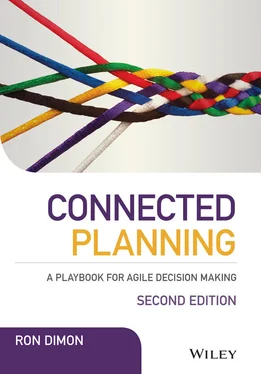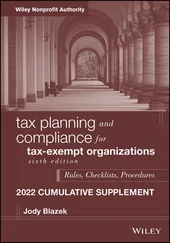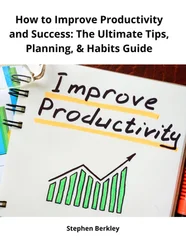55 42
56 43
57 44
58 45
59 46
60 47
61 48
62 49
63 50
64 51
65 52
66 53
67 54
68 55
69 56
70 57
71 58
72 59
73 60
74 61
75 62
76 63
77 64
78 65
79 66
80 67
81 68
82 69
83 70
84 71
85 72
86 73
87 74
88 75
89 76
90 77
91 78
92 79
93 80
94 81
95 82
96 83
97 84
98 85
99 86
100 87
101 88
102 89
103 90
104 91
105 92
106 93
107 94
108 95
109 96
110 97
111 98
112 99
113 100
114 101
115 102
116 103
117 104
118 105
119 106
120 107
121 108
122 109
123 110
124 111
125 112
126 113
127 114
128 115
129 116
130 117
131 118
132 119
133 120
134 121
135 122
136 123
137 124
138 125
139 126
140 127
141 128
142 129
143 130
144 131
145 132
146 133
147 134
148 135
149 136
150 137
151 138
152 139
153 140
154 141
155 142
156 143
157 144
158 145
159 146
160 147
161 149
162 150
163 151
164 152
165 153
166 154
167 155
168 156
169 157
170 158
171 159
172 160
173 161
174 162
175 163
176 164
177 165
178 166
179 167
180 168
181 169
182 170
183 171
184 172
185 173
186 174
187 175
188 176
189 177
190 178
191 179
192 180
193 181
194 183
195 184
196 185
197 187
198 189
199 190
200 191
201 192
202 193
203 194
204 195
205 196
206 197
CONNECTED PLANNING
A PLAYBOOK FOR AGILE DECISION MAKING
SECOND EDITION
Ron Dimon

Copyright © 2021 by Ron Dimon. All rights reserved.
Published by John Wiley & Sons, Inc., Hoboken, New Jersey.
Published simultaneously in Canada.
No part of this publication may be reproduced, stored in a retrieval system, or transmitted in any form or by any means, electronic, mechanical, photocopying, recording, scanning, or otherwise, except as permitted under Section 107 or 108 of the 1976 United States Copyright Act, without either the prior written permission of the Publisher, or authorization through payment of the appropriate per-copy fee to the Copyright Clearance Center, Inc., 222 Rosewood Drive, Danvers, MA 01923, (978) 750-8400, fax (978) 646-8600, or on the Web at www.copyright.com. Requests to the Publisher for permission should be addressed to the Permissions Department, John Wiley & Sons, Inc., 111 River Street, Hoboken, NJ 07030, (201) 748-6011, fax (201) 748-6008, or online at www.wiley.com/go/permissions.
Limit of Liability/Disclaimer of Warranty: While the publisher and author have used their best efforts in preparing this book, they make no representations or warranties with respect to the accuracy or completeness of the contents of this book and specifically disclaim any implied warranties of merchantability or fitness for a particular purpose. No warranty may be created or extended by sales representatives or written sales materials. The advice and strategies contained herein may not be suitable for your situation. You should consult with a professional where appropriate. Neither the publisher nor author shall be liable for any loss of profit or any other commercial damages, including but not limited to special, incidental, consequential, or other damages.
For general information on our other products and services or for technical support, please contact our Customer Care Department within the United States at (800) 762-2974, outside the United States at (317) 572-3993, or fax (317) 572-4002.
Wiley publishes in a variety of print and electronic formats and by print-on-demand. Some material included with standard print versions of this book may not be included in e-books or in print-on-demand. If this book refers to media such as a CD or DVD that is not included in the version you purchased, you may download this material at http://booksupport.wiley.com. For more information about Wiley products, visit www.wiley.com.
Library of Congress Cataloging-in-Publication Data is available:
ISBN 9781119485803(hardback)
ISBN 9781119485827(epdf)
ISBN 9781119485797(epub)
Cover Design: Wiley
Cover Image: © JamesBrey/iStock/Getty Images
For my mom and dad, Gwen & Colin “Bill” Dimon, who connected me to the world .
I've spent the last 30 years researching and writing within the organizational domain. During this time, I have educated nearly 70,0000 aspiring businessmen and women in the fundamentals and theories of management and leadership and how to put such knowledge into real-world practice. One concept that has been the focal point of my research and teaching involves the topic of self-leadership. Self-leadership is an empowerment process of leading yourself to overcome obstacles to your goals. In the same way that one needs to be self-leading to finish a grueling marathon, an organization must be self-leading in order to execute its plans in an efficient and effective manner. What drives self-leadership at all levels in an organization? The people within the organization of course—and those people must be involved in the planning occurring in an organization. Without a plan, an organization has no direction. Without a plan that involves employees at all levels of the company and thus encouraging self-leadership, an organization not only has no direction, but it has uncommitted employees that lack the passion and energy needed for success. As Dr. Laurie Buchanan once stated, “No involvement means no commitment—no exception.”
The planning system is where an organization defines and decides what it wants to accomplish and who will do the work to make the accomplishment happen. In a plethora of organizations, planning systems do not foster self-leadership. People are often drafted into a process that is disjointed, unorganized, manually tedious, and political. It is many times facilitated by different point solutions and legacy tools that don't speak the same language. Rather than debating the art of the possible for the business, teams often argue about the sources of data, assumptions, and drivers. The current planning system in numerous companies is a top-down, nonempowering drag on culture, morale, and organizational effectiveness. How is an organization able to leverage its planning system to overcome impending obstacles when the planning system is an obstacle itself? How is an organization going to remain competitive in the chaotic times of today? These questions suggest that in order to thrive, companies today need to think about planning in a different, innovative way—planning that encourages individuals to lead themselves and be part of the planning process. Connected Planning is a wonderful step in this direction.
In a Connected Planning environment, the answer to the question “what's possible?” comes from a much more democratic debate than what we are used to seeing, involving stakeholders at the top of the organization and the subject matter experts with boots on ground. This begins a cycle of collaboration and calibration that leads to new insights, enabling greater agility and resilience. In the words of a timeless proverb, “If you want to go fast, go alone. If you want to go far, go together.”
Читать дальше













